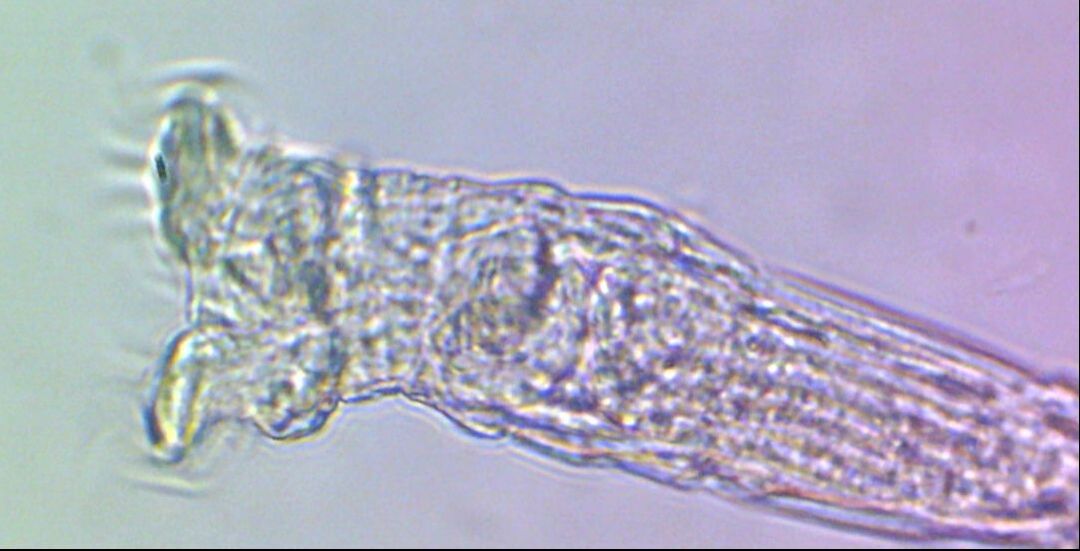|
Philodina roseola is otherwise known as the common rotifer. Rotifers are microscopic, aquatic animals that inhabit both still and flowing freshwater environments. They inhabit the thin films of water that surround particles of soil. They can be found in many moist environments, including mosses and lichens, soil litter, sewage treatment plants, mushrooms, and on other microscopic organisms.
Even though they are microscopic, rotifers are recognized as animals, and as such are part of the Kingdom Animalia, because of their specialized organs and complete digestive tract. The rotifer’s head is surrounded by a corona of cilia, drawing a vortex of water into the mouth, which is then sifted for food. The food is then ground by jaws in the pharynx (throat). The toe of the rotifer ends in a cement gland, which allows the rotifer to attach itself to a surface and feed without drifting away. Rotifers are a reliable food source for copepods, fish, starfish, and jellies.* Regarding their eating habits, Rotifers eat algae, dead bacteria, detritus (debris and dead stuff) and other protozoans. |
|
*Information from:Visualizing Microbial Seascapes, sites.evergreen.edu/vms/philodina-roseola-ip/

